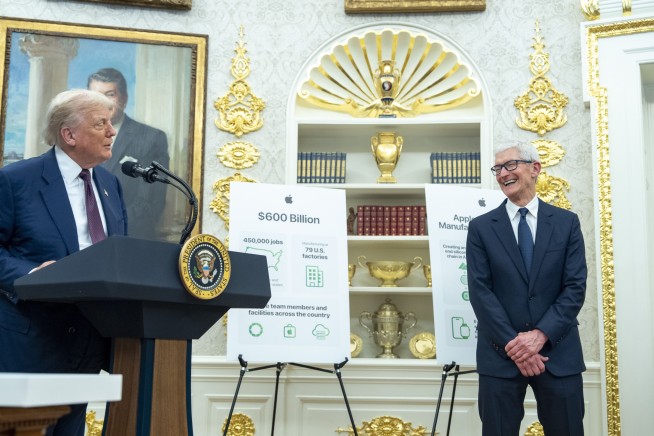AI Sentiment: Bearish
Reason: The proposed 100% tariff could increase costs and hinder innovation in the tech industry, raising concerns over its feasibility and impact.
In a bold move that has sent shockwaves through the tech industry, former President Donald Trump has proposed a staggering 100% tariff on imported computer chips. This announcement comes at a time when the global semiconductor market is already grappling with supply chain issues and rising prices. The proposed tariff aims to bolster domestic manufacturing and reduce reliance on foreign imports, particularly from countries like China.
Trump's stance reflects a growing sentiment among many policymakers who believe that increasing domestic chip production is essential for national security and economic stability. The semiconductor industry is a critical component of modern technology, influencing everything from smartphones to automobiles. By imposing such a hefty tariff, Trump hopes to incentivize American companies to invest in local manufacturing facilities.
Critics of the proposed tariff, however, warn that it could lead to increased costs for consumers and manufacturers alike. The tech sector is already facing challenges due to ongoing supply shortages, and a 100% tariff could exacerbate these issues, hindering innovation and driving prices up for end-users. Additionally, businesses that rely on imported chips may find it difficult to adjust quickly to such drastic changes in trade policy.
This move is part of a broader trend of reshaping trade relationships and prioritizing domestic production in key industries. While supporters argue that the tariff could strengthen the U.S. economy and create jobs, the potential backlash from consumers and tech companies raises questions about its feasibility and overall impact.
As the discussion around this proposed tariff unfolds, stakeholders from various sectors will be closely monitoring its implications on the technology industry and the broader economy. The outcome of this proposal could significantly affect the future landscape of semiconductors and the ongoing efforts to enhance U.S. manufacturing capabilities.




